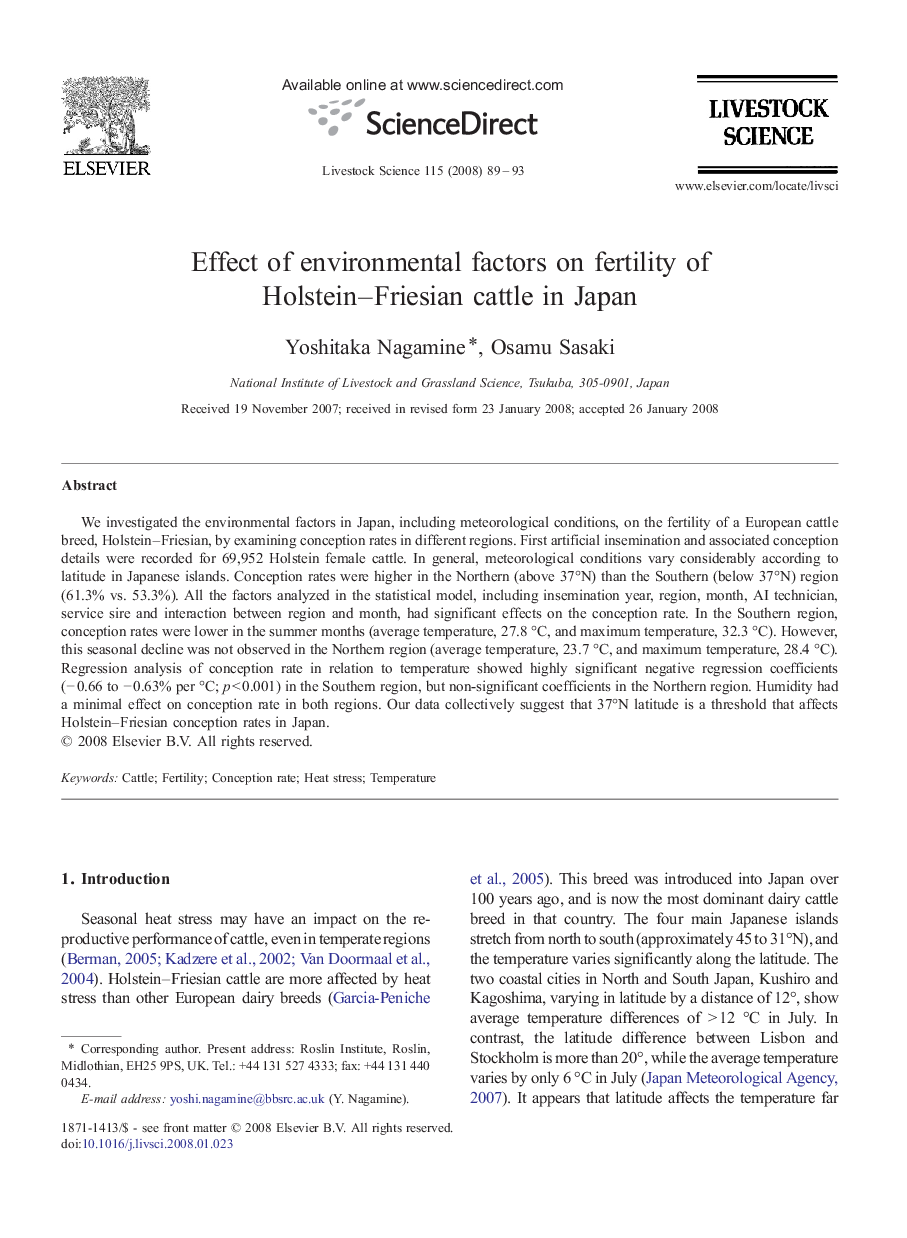| Article ID | Journal | Published Year | Pages | File Type |
|---|---|---|---|---|
| 2448544 | Livestock Science | 2008 | 5 Pages |
We investigated the environmental factors in Japan, including meteorological conditions, on the fertility of a European cattle breed, Holstein–Friesian, by examining conception rates in different regions. First artificial insemination and associated conception details were recorded for 69,952 Holstein female cattle. In general, meteorological conditions vary considerably according to latitude in Japanese islands. Conception rates were higher in the Northern (above 37°N) than the Southern (below 37°N) region (61.3% vs. 53.3%). All the factors analyzed in the statistical model, including insemination year, region, month, AI technician, service sire and interaction between region and month, had significant effects on the conception rate. In the Southern region, conception rates were lower in the summer months (average temperature, 27.8 °C, and maximum temperature, 32.3 °C). However, this seasonal decline was not observed in the Northern region (average temperature, 23.7 °C, and maximum temperature, 28.4 °C). Regression analysis of conception rate in relation to temperature showed highly significant negative regression coefficients (− 0.66 to − 0.63% per °C; p < 0.001) in the Southern region, but non-significant coefficients in the Northern region. Humidity had a minimal effect on conception rate in both regions. Our data collectively suggest that 37°N latitude is a threshold that affects Holstein–Friesian conception rates in Japan.
